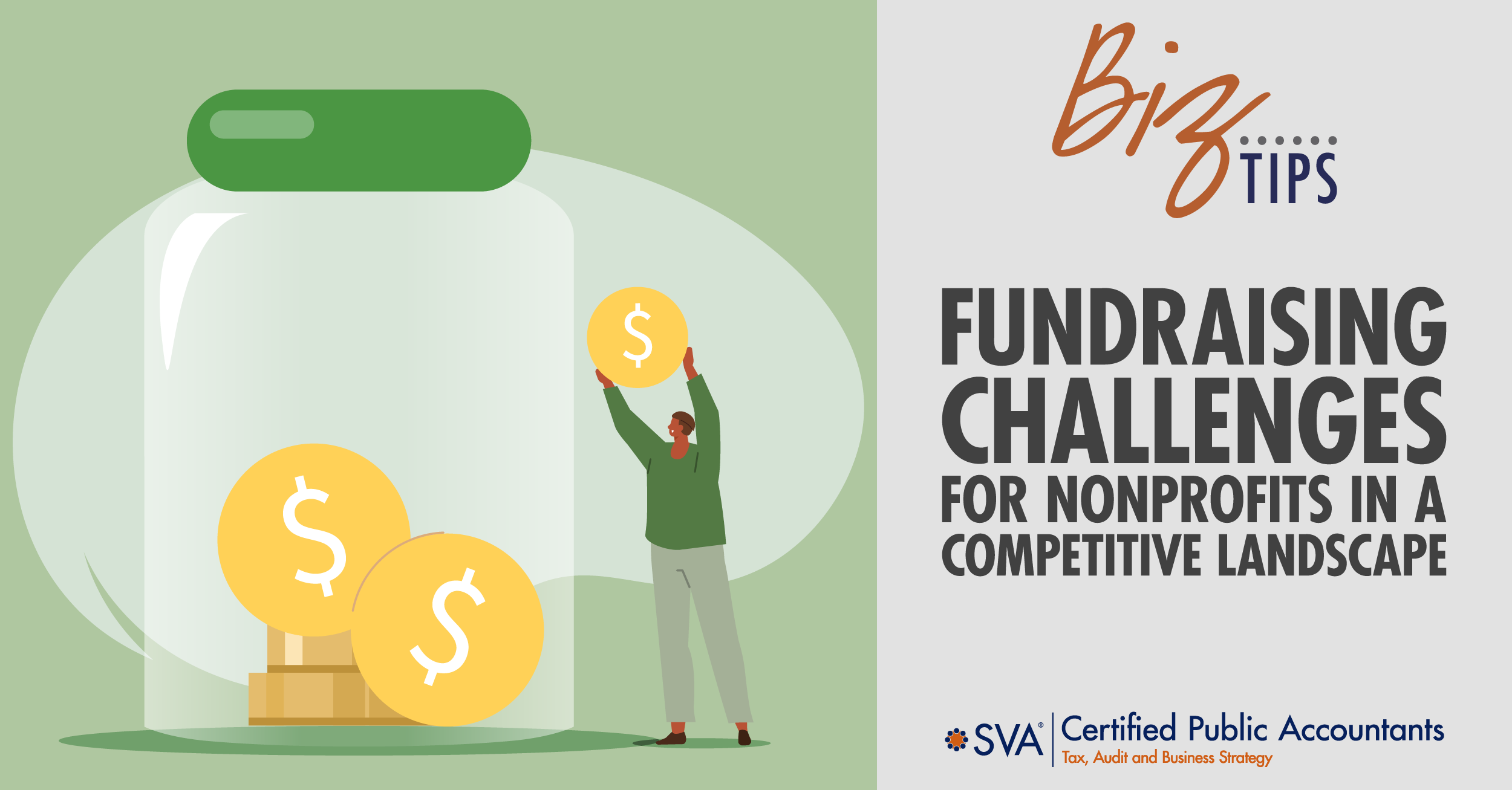In the altruistic yet complex world of nonprofit organizations, fundraising is a vital lifeline. However, amidst a sea of worthy causes and an ever-changing economic landscape, nonprofits often find themselves facing significant challenges in raising the funds necessary to achieve their missions.
Discover the common hurdles nonprofits encounter in their fundraising efforts and strategies they can use for adapting and thriving in a competitive environment.
Common Fundraising Challenges for Nonprofits
1. Donor Fatigue
There are many causes in the world today and a majority of them are looking for donors to help them out financially. With this many hands reaching out for help, potential donors can become overwhelmed.
- How do we decide who to donate to?
- Do we give less to more nonprofits or more to fewer nonprofits?
This situation can lead to donor fatigue. This is particularly challenging for smaller nonprofits that may not have a large or established donor base.
2. Economic Uncertainty
The economy certainly comes into play regarding nonprofit donations and most other business decisions. A downturn in the economy can lead to a decrease in donations as individuals and companies “tighten the belt” on their cash flow to make sure they can make ends meet and keep their companies afloat. This, in turn, can result in a cutback on their charitable giving.
3. Competition for Funding
Similar to donor fatigue, the crowded nonprofit sector has created intense competition for funding. Standing out from the crowd can be a daunting task, especially for smaller organizations with a limited ability to market and make themselves known.
4. Limited Resources
Many nonprofits operate with limited resources. These resources include funding but also:
- Staffing
- Budget (marketing)
- Time (staff and volunteers)
These limited resources can hinder an organization's ability to execute effective fundraising campaigns, especially smaller organizations with even more limited resources.
5. Keeping Up with Technology
For some nonprofits, technology has been an issue. Upgrading to new technologies costs money some organizations don’t have, so they stick with outdated systems that aren’t able to help them function properly. Finding staff or volunteers to help with implementing new technology is also a problem.
Strategies for Successful Fundraising
1. Tell a Compelling Story
Statistics are great for showing how an organization is doing or what they are using their funding for, but not always great at relating the story of the organization. Stories tell potential donors about your organization and give them a deeper dive into understanding what your organization’s purpose is.
Make your story clear and share stories of those your organization has helped. Many donors want to know how their donations are helping. These stories will ultimately show this and give donors more confidence in continuing to give to your organization.
2. Diversify Funding Sources
If your organization relies mostly on individual donations, it’s time to start branching out to find other funding sources. Some possibilities include:
- Grants
- Corporate sponsorships
- Fundraising events
- Online campaigns
As the saying goes, don’t put all your eggs in one basket. Diversify your funding sources to provide financial stability for your organization and reduce risk if funding from one avenue starts to fall.
3. Build Strong Relationships
Use your storytelling to build strong relationships with your donors and with potential donors. Keep your communication with them personal and keep them informed with updates about your organization and how their donations have helped.
Instead of starting campaigns to potential donors by asking for money right away, start by simply telling them about your organization: how you started, your purpose, and examples of how donations have helped your organization fulfill its purpose.
Building these relationships with your stories can build trust and eventually loyalty to your organization…and yes, donations as well.
4. Leverage Social Media and Digital Tools
The days of postcards and flyers sent in the mail aren’t dead, but for nonprofits to stay competitive with other organizations, they will need to leverage social media and other digital tools.
Mailings can be expensive, using up funding that could be used in other areas of the organization. Use social media to reach a broader audience at a much cheaper cost. Another consideration is looking into email platforms that can automate communications with current and potential donors. This automation can provide relief for the staff and streamline communications.
A smart use of available funding is investing in a user-friendly website. This website can be used to tell your organization’s story and provide users with all the information they need to make an informed decision when possibly donating.
Along with a website, consider utilizing online fundraising platforms. We are in a digital age, so make it as easy as you can for individuals and businesses to learn about your company and make a donation, all in one place with minimal fuss. Using databases can also help with tracking donations and maintaining mailing lists.
5. Collaborate and Partner
The nonprofit landscape is very competitive, but you may be able to use that to your advantage. Are there nonprofits in your area that have similar causes, or you feel would make a good partner? Reach out to some of these organizations about collaborating on events or campaigns.
These partnerships can expand the reach of your organization and allow you to share resources when conducting events and campaigns. Creating these mutually beneficial relationships can also help attract a wider pool of donors.
6. Invest in Training and Development
Having staff to run your nonprofit is great, but do they have the necessary skills to maximize your fundraising efforts? Talk to your staff members and learn what their current skills are so you know who is the best fit in your organization.
- Do you have a staff member who likes and uses social media frequently? This could be the person you need to help with your social campaigns.
- Do you have someone who has a background in writing? This person would be a great candidate to help with grant writing.
If you have staff that don’t necessarily have skills to fill a void, give them the training they need to develop the skills to perform tasks for the organization. Having a skilled staff can significantly enhance your fundraising efforts.
7. Adapt and Innovate
As with everything in life, people and organizations must be able to adapt and innovate to survive. Nonprofits must monitor trends in the industry so they can adapt to new ideas and approaches to the way they do business.
The use of technology is the biggest area where nonprofits must be willing to accept, learn, and utilize to keep pace with other organizations. Doing things the old way usually leaves organizations behind to wither.
Compete at the Highest Level
Nonprofits have their work cut out for them. Not only is there a lot of competition in this industry, you also need to make sure your organization is adapting to new ways of doing things, especially regarding technology. Keep a pulse of your staff and get the right people in the right places to maximize your efforts.
If you are a nonprofit struggling to find ways to gain new donors or maintaining your current ones, reach out to one of our professionals to learn more strategies to help your nonprofit succeed.
© 2024 SVA Certified Public Accountants

